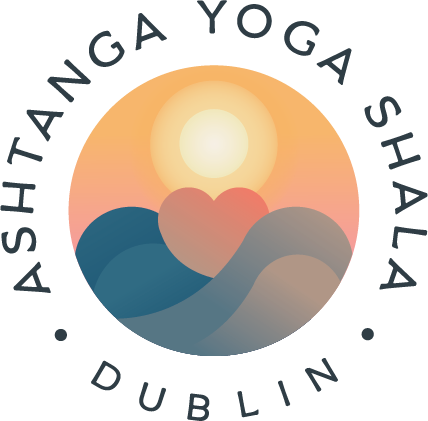What does 'Ashtanga' mean
The word Ashtanga in the Sanskrit language means eight limbs (astau means eight and anga means limb).These eight limbs are
- Yama
- Niyama
- Asana
- Pranayama
- Pratyahara
- Dharana
- Dhyana
- Samadhi
Ok, I know, they’re in Sanskrit too so that’s no help. Well, I’ll try to explain what each of these words mean without getting too technical.YamaThere are five yama (or yamas, if we follow the incorrect custom of pluralising them using the English language ‘s’).
- Ahimsa
- Satya
- Asteya
- Brahmacharya
- Aparigraha
Yes, Sanskrit again!Translated into English they mean,
- Non-violence
- Truthfulness
- Not stealing
- Temperance
- Not coveting
I won’t go into any further explanations of yama here but as you can see they form a basic guide to living harmoniously with the world outside our-selves.Niyama Niyama is also five-fold
- Saucha
- Santosha
- Tapas
- Swadhyaya
- Ishwarapranidhana
That is,
- Cleanliness/Purity
- Contentment
- Self-discipline
- Study (self study and study of yogic texts)
- Devotion to a power greater than our-selves
Again, a detailed commentary is not what I’m going for here, so it will suffice to point out that niyama form a basic guide to living harmoniously within our-selvesAsanaAsana is what most people think of when they think of Yoga. Asana is the physical practice of yoga postures. Guruji (Pattabhi Jois) recommended that we start our yoga practice with this, the third limb, because the first two limbs are very difficult. If we try to take even one of the yama or niyama and practise it in its purest form we will see how right he was. Mahatma Gandhi is an shining example of somebody who practised absolute non-violence (ahimsa) and he changed the course of history.It is more realistic and practical for most of us to start with asana.First we must make our bodies healthy. Otherwise, how can we think of purifying our minds and gaining enlightenment? If illness is in the body we are pre-occupied with that and there is no space for spiritual practice. When asana becomes firmly grounded then yama and niyama happen automatically.PranayamaThe practice of breath control taught in many yoga traditions is pranayama. In his Yoga Sutras (the cornerstone of yoga practice and philosophy) Patanjali states
Tasmin sati svasa prasvasayor gati vicchedah pranayamah
That being acquired, the movements of inhalation and exhalation should be controlled. This is pranayama.
(Sutra II:49)
The word ‘that’ refers to steadiness in the practice of asana. So we should take it that pranayama is not to be practised until we have firmly established our asana practice. Guruji did not teach pranayama until the student had completed the second series of the ashtanga vinyasa method.
With reference to pranayama Patanjali also states
Tatah ksiyate prakasavaranam
As its result, the veil over the inner Light is destroyed
(Sutra II:52)
Dharanasu ca yogyata manasah
And the mind becomes fit for concentration
(Sutra II:53)
Pratyahara Pratyahara is the bridge between the previous four, external, limbs and the following three, internal, limbs. It can be translated as the withdrawal of the senses. In other words our senses turn inwards and our minds are no longer distracted by the outside world. All of our focus is internal.
Tatah parama vasyatendriyanam
Then follows complete mastery over the senses
(Sutra II:55)
Dharana, Dhyana, SamadhiThe last three limbs are inseparable and follow on from each other. Dharana is usually translated as ‘concentration’ and technically it is the state of consciousness in which the mind is aware of only one object or idea. Dhyana is translated as ‘meditation’ and it is the state of consciousness in which concentration (dharana) is continuous. Samadhi is the state of consciousness in which the mind and the object of meditation are as one. The student in the state of samadhi 'forgets themselves'. This is sometimes translated as ‘bliss’ and is the highest form of Yoga practice.Above is a very brief explanation of the eight limbs. There are thousands of books written on the subject of Yoga from both a philosophical and a practical point of view and it is a vast subject. However, theoretical knowledge is useless unless we have practical knowledge. Guruji was famous for saying that yoga is “99% practice and 1% theory”. We can practise asana and, following that, pranayama. According to Guruji, if we do this, then “all is coming”. He was telling us that all of the other limbs will spontaneously happen (provided we are conscious of yama and niyama) and we will experience that state of yoga called samadhi.John To hear Guruji speak a little about this you can watch this video[youtube=http://www.youtube.com/watch?v=uQGRq00xqbI]
